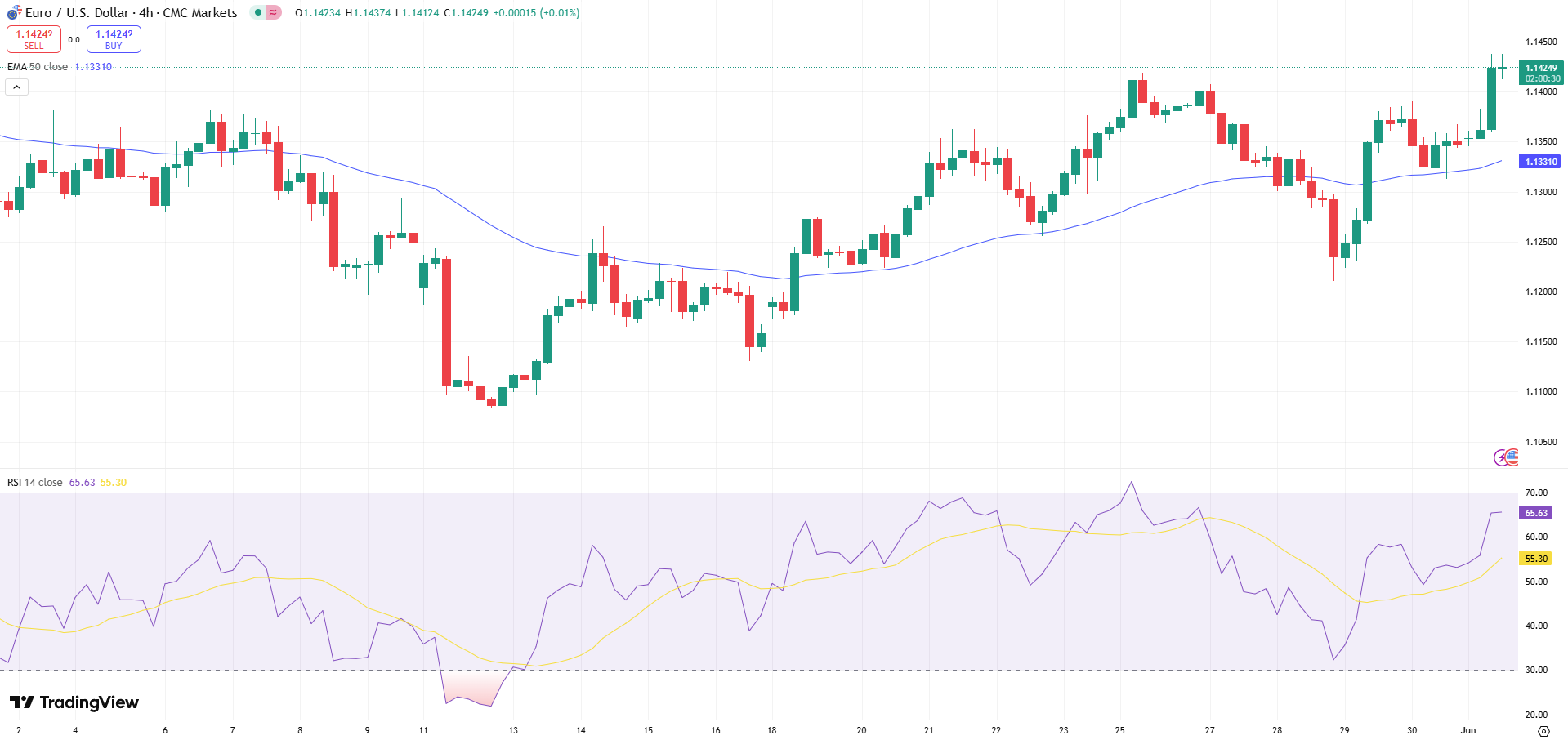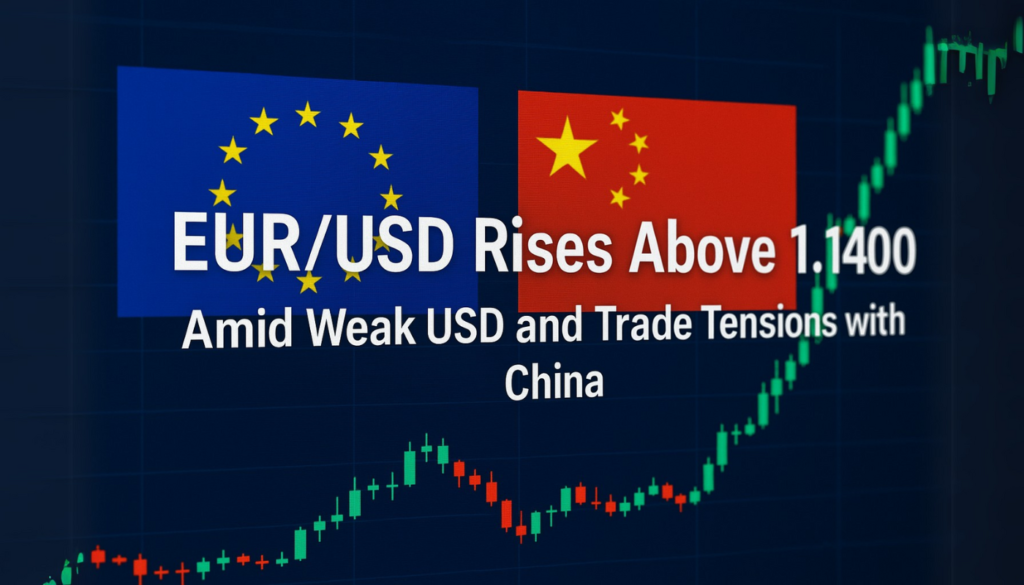The euro started June on a bullish trajectory, climbing past 1.1400 against the U.S. dollar as the greenback faced fresh headwinds. Broad-based dollar weakness, driven by renewed U.S.-China trade tensions, provided the lift for the euro’s advance.
The Relative Strength Index (RSI) on the 4-hour chart remained above 60, signaling that EUR/USD could climb further before entering overbought territory. Immediate resistance levels are seen at 1.1430, followed by 1.1500 and 1.1575, the high reached on April 21.
- Key resistance levels:
- 1.1430: Immediate barrier
- 1.1500: Psychological and static resistance
- 1.1575: April 21 peak
Trade Tensions Fuel Euro Strength
The renewed strain in U.S.-China trade relations has ignited investor caution and bolstered demand for the euro. Last Friday, U.S. President Donald Trump accused China of violating the trade agreement, prompting a response from China’s Ministry of Commerce. The ministry alleged that the U.S. breached the 90-day trade truce by implementing discriminatory measures.
These developments weighed heavily on the USD, allowing the EUR/USD pair to maintain upward momentum. However, the focus now turns to the upcoming ISM Manufacturing Purchasing Managers Index (PMI) data for May, which could either reinforce or challenge the dollar’s recent weakness.
- If the ISM Manufacturing PMI exceeds 50, indicating expansion, the USD may regain strength.
- A weaker-than-expected PMI reading could extend dollar weakness and support further euro gains.
Outlook Hinges on ECB and U.S. Data
As the week progresses, traders will be closely watching key economic updates. The European Central Bank (ECB) is set to announce its latest monetary policy decision, while the U.S. Bureau of Economic Analysis will release May’s employment report on Friday.

- Key support levels to monitor:
- 1.1380: Fibonacci 23.6% retracement
- 1.1320: 200-period Simple Moving Average
- 1.1270: Fibonacci 38.2% retracement
Overall, the euro’s momentum hinges on both external trade dynamics and upcoming data. A decisive breach above 1.1430 could set the stage for a retest of 1.1500, while stronger-than-expected U.S. data may limit gains.


